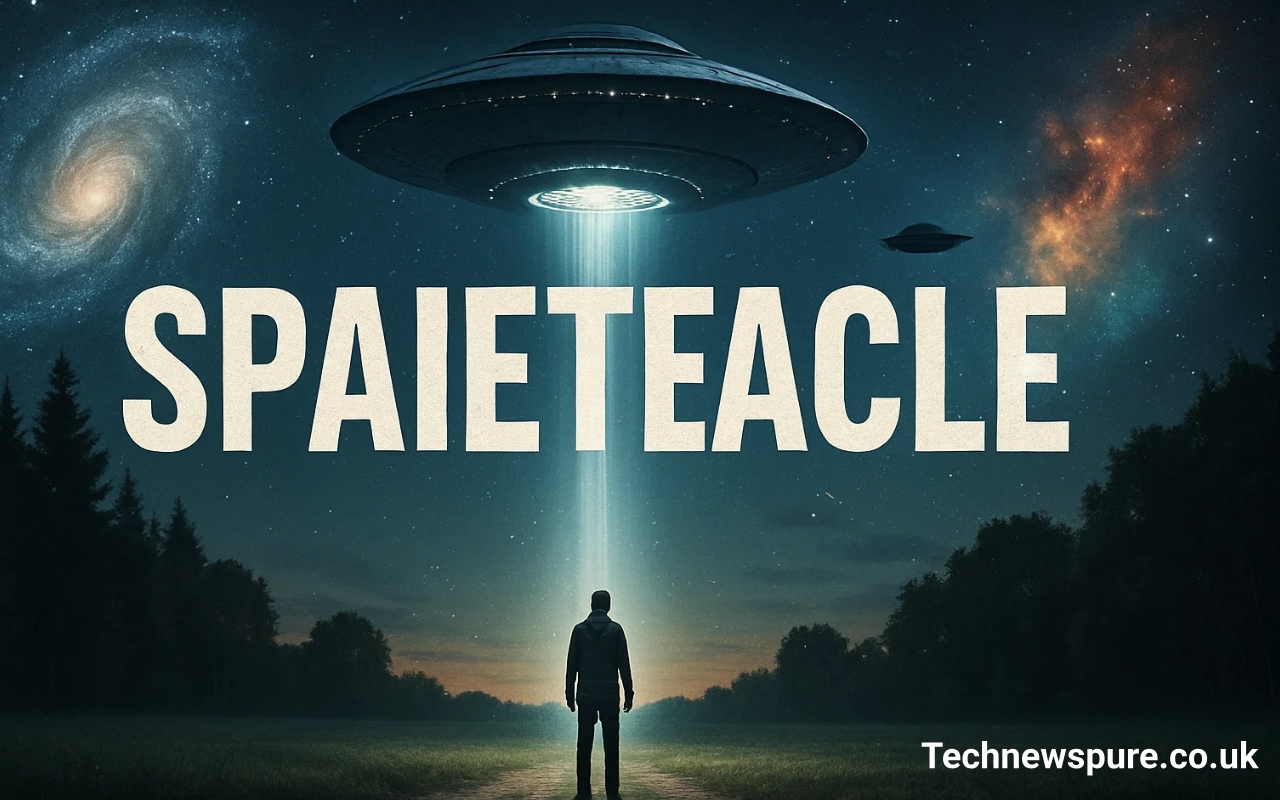Introduction
In a world where digital storytelling, physical interaction, and experiential design are rapidly converging, a new term has emerged that encapsulates this thrilling fusion—spaietacle.
This hybrid concept is not merely a buzzword but a transformative movement changing how we connect with spaces, media, and narratives. Imagine stepping inside a story rather than just reading or watching it. Imagine architecture that breathes, reacts, and changes with you.
Imagine technology that doesn’t isolate but invites touch, movement, and emotion. That’s what spaietacle is all about. It’s more than entertainment. It’s a full-body, full-sense immersion into a world meticulously crafted from pixels, light, sound, and structure.
This article is your ultimate guide to understanding, creating, and leveraging spaietacles. We’ll explore its origins, how it works, where it’s headed, and why it’s becoming one of the most potent tools in education, marketing, art, and technology. By the end, you’ll understand why this unique blend of “space” and “spectacle” is not just an evolution but a revolution in human interaction.
What Is Spaietacle? – Definition and Origins
To truly grasp the power of the word spaietacle, we must first deconstruct its roots. The term itself is a linguistic fusion—“space” and “spectacle.” But these two components are more than just words; they represent philosophies. Space, in this context, is not merely physical room or architecture.
It is the intentional design of environments that influence behavior, emotions, and perception. Spectacle, derived from Latin spectaculum, refers to visually striking performances, events, or experiences that captivate audiences through grandeur, drama, or surprise. Combine these, and you get something transcendent: spaces engineered to perform, engage, and emotionally stir.
The concept finds its genesis in age-old practices. Ancient temples, Gothic cathedrals, Shakespearean theaters, and even tribal rituals all share something in common—they envelop the audience in immersive environments. But what distinguishes spaietacle from its predecessors is its use of modern technologies. With virtual and augmented reality, spatial computing, projection mapping, motion sensors, and sound engineering, today’s creators can literally build a dream and place people inside it. Spaietacle is the bridge between narrative and reality. It doesn’t just tell a story—it becomes the story.
Why Spaietacle Matters in Today’s Digital Age
In the current digital landscape, attention is a scarce resource. We are bombarded with content—scrolling endlessly through TikToks, Reels, and notifications. But how often do we truly connect with what we see? Spaietacle offers a solution to this crisis of attention by pulling people out of passive scrolling and placing them inside an experience. It is immersive, memorable, and emotionally resonant.
What makes spaietacle especially important today is its power to build real connection in an increasingly disconnected world. It answers a deep, almost primal human yearning—to be seen, to feel, to belong, to be part of something larger than ourselves. In a spaietacle, the lines between observer and participant vanish. You are no longer watching a story unfold. You are the story. And in doing so, you feel an emotional connection that static media simply cannot match.
Moreover, as industries fight to stand out in saturated markets, spaietacle is becoming the go-to format for high-impact experiences. Whether it’s a music artist creating a dreamscape on stage or a museum guiding you through a time-traveling journey, the immersive nature of spaietacle sticks with you long after the experience ends. That’s not just engagement. That’s transformation.
How Spaietacle Works – The Core Components Behind the Magic
Creating a spaietacle is akin to composing a symphony—it requires harmony among many elements. First and foremost is technology. Immersive experiences rely heavily on VR (virtual reality), AR (augmented reality), and MR (mixed reality). These technologies overlay digital elements on the physical world or transport you entirely into a digital realm. For example, VR can simulate walking through ancient Egypt, while AR might let you see glowing footsteps guide your path in a physical maze.
But technology alone isn’t enough. The spatial design of the environment must also be carefully curated. This means architects, designers, and experience curators collaborate to create rooms that are not just seen but felt. Walls may change color based on sound. Floors might vibrate with your heartbeat. Air temperature, lighting, and materials shift dynamically with your movement. This is not just design—it’s responsive storytelling.
Another pillar of spaietacle is multi-sensory engagement. Touchscreens, motion detectors, 360-degree speakers, scent diffusers, and even taste components can be integrated. Want to experience a rainforest? You don’t just see trees—you hear the chirping birds in spatial audio, feel mist on your skin, and smell wet earth. This total sensory immersion turns memory into experience, and experience into a lasting emotional imprint.
Industries That Are Redefining Engagement Through Spaietacle
The versatility of spaietacle allows it to thrive across a wide range of industries, each reimagining how they interact with their audiences.
In the entertainment sector, concerts, theater, and festivals are transforming into walk-in performances. Instead of sitting in rows, audiences move through digital forests, underwater kingdoms, or neon dreamlands while performers interact with them directly. Artists like Beyoncé, Travis Scott, and Childish Gambino have experimented with immersive tech in their shows, creating performances that are as much experience as they are concert.
Museums and education centers are adopting spaietacle to make learning tactile and fun. Imagine walking through a virtual bloodstream in a science exhibit or navigating a planetarium where constellations move as you gaze at them. These educational spaietacles not only engage but deepen understanding by involving multiple learning styles.
In marketing, brands like Nike, Samsung, and BMW have turned product launches into spaietacles—interactive environments that let users touch, feel, and even co-create the brand story. This has proven especially effective with younger generations, who value experiences over products.
Even healthcare is getting involved. Hospitals are experimenting with immersive waiting rooms that use calming spaietacle environments to reduce patient stress. Mental health clinics are incorporating spatial therapy rooms where patients can meditate, move, and interact in safe, nurturing environments.
The Tangible Benefits of Embracing Spaietacle
Why should companies, educators, artists, and even governments invest in this complex format? Because the returns are enormous—emotionally, creatively, and economically.
Firstly, spaietacle boosts engagement like nothing else. By involving multiple senses and requiring physical or cognitive participation, audiences are more likely to remember the experience and share it. Word of mouth and social media amplification become natural extensions of the experience.
Secondly, it creates deep emotional connections. People remember not just what they see, but how they feel. A child walking through a holographic storybook will carry that wonder longer than any cartoon. A customer who customizes a product inside an interactive showroom forms an emotional attachment that outlasts traditional advertising.
Thirdly, it fosters collaboration and innovation. Building a spaietacle requires cross-functional teams: artists, designers, coders, engineers, psychologists. This diversity of talent leads to unexpected ideas and revolutionary breakthroughs.
Challenges and Barriers to Creating a Spaietacle
As magical as they are, spaietacles come with real-world challenges. The first is cost. High-end immersive setups require advanced hardware, skilled labor, and time-consuming planning. From projection mapping to custom-built rooms and software development, the investment can be significant.
Accessibility is another hurdle. Not everyone can use a VR headset comfortably. Not every space can be transformed into a responsive environment. Some users may experience motion sickness or sensory overload. Thus, designing inclusive, adaptable spaietacles is crucial.
Finally, scalability remains a key concern. A museum may host a week-long spaietacle with great success, but replicating that across multiple locations or online platforms requires additional tech, bandwidth, and creative adaptation.
Best Practices for Planning Your First Spaietacle
If you’re considering developing a spaietacle for your organization, start by defining clear goals. Is it meant to educate, entertain, promote, or heal? Next, select the right venue—flexible architecture with modular features is best. Old warehouses, black-box theaters, and gallery spaces are often ideal.
Then, assemble your dream team. You’ll need a creative technologist, a UX designer, a sound engineer, a lighting expert, and most importantly—someone who understands storytelling. The narrative is the soul of a spaietacle; without it, you’re just left with pretty lights.
Finally, plan for metrics and feedback. Use heatmaps to see where people spend the most time, incorporate feedback stations, or analyze sentiment on social media. Spaietacles may feel like magic, but they run best on data.
The Future of Spaietacle: Where We’re Headed
Looking ahead, spaietacles are poised to become more intelligent and adaptive. AI will allow for real-time personalization, adapting the environment based on facial expressions, biometrics, or past choices. Want a room that changes color based on your heartbeat? We’re almost there.
In the era of the metaverse, spaietacle will transcend physical limitations. Imagine hosting a global art exhibit where users enter through VR portals, interact with each other, and even influence the space collectively. The fusion of blockchain, NFTs, and spatial storytelling will open new economies for artists and brands.
Moreover, sustainability will shape future spaietacles. Expect virtual installations to reduce material waste, while renewable energy powers physical events. The future is immersive—and conscious.
Read More: Technewspure.co.uk
Conclusion: Spaietacle as a New Language of Experience
In a world where content overload numbs the senses, spaietacle breathes life back into experience. It gives us a new way to feel, learn, connect, and imagine. Whether you’re building a brand, teaching a lesson, sharing your art, or healing hearts—spaietacle is your ultimate medium.
Don’t just be seen. Be felt. Be remembered.
Call to Action
Ready to build a spaietacle for your business or institution? Don’t wait for the future—design it. Reach out to our immersive experience team for a free consultation, or subscribe to our newsletter for exclusive case studies and expert insights.

